The post How Artificial Intelligence leads us forward? appeared first on Magnimind Academy.
]]>Major impacts of artificial intelligence
![]()
While we’re probably heading toward a future where machines might become intellectually equal or superior to humans, let’s take a look at how artificial intelligence is transforming the present world now.
- Highly personalized production: Advancements in artificial intelligence together with software intelligence are empowering businesses to offer products and services that are extremely relevant to individual customers. According to studies, brands that are willing to personalize products are able to develop greater trust with their consumers. Studies also revealed that a huge percentage of customers are willing to have trusted brands use their personal data to receive targeted and tailored products, offers, and recommendations.
- No more repetitive tasks: Repetitive tasks aren’t only monotonous but consume a huge amount of time and energy of the human workforce as well. With the help of artificial intelligence, many of these tasks are being carried out by machines as they can think faster than humans and are capable of multi-tasking. Additionally, as their time and speed are calculation based parameters, those can be adjusted, if required.
- Almost flawless medical diagnosis: Artificial intelligence has enabled the healthcare industry to effectively analyze possible advert scenarios by advancing the process of finding solutions or preventing. It has also made healthcare accessible for those who’ve had unequal access until today, because now it has become possible to build a personalized way for inclusion for each one.
- Personalized education: It’s a fact that it’s impossible for a single educator to work with each student at once. With the emergence of a personal AI assistant or tutor, today it has become possible for students to get one-on-one, additional help in areas of required development. While some educators may fear the idea of artificial intelligence replacing them in the future, the reality is, human intelligence and AI working in tandem will only drive us forward.
Parting Thoughts
Virtually, there’s nothing that artificial intelligence won’t be able to support but it requires human expertise to oversee, assign its responsibilities, and identify its limitations. When the best parts of AI would be coupled with the best parts of humanity, it’ll take us to a different level together than either one could do individually. So, it can be safe to say that it’s probably the best time to learn artificial intelligence. A comprehensive AI training would not only help you get an edge in today’s competitive job market but will make you future-proof as well.
. . .
To learn more about artificial intelligence, click here and read our another article.
The post How Artificial Intelligence leads us forward? appeared first on Magnimind Academy.
]]>The post What can we do with Artificial Intelligence? appeared first on Magnimind Academy.
]]>1- E-learning
![]()
Artificial Intelligence is changing e-learning drastically. You can use AI to personalize learning for every individual student. Rather than having the same study and training materials for each student, you can use AI-enabled hyper-personalization to create a custom learning profile of every student and then customize the study materials based on their preferred style of learning, ability, and experience. This would be a boon to educators as they can take advantage of augmented intelligence assistance that offers them an extensive variety of materials leveraging the same core curriculum and yet, let them meet the specific needs of every student. Apart from helping deliver smart content and personalized learning, you can also use artificial intelligence to automate administrative tasks like evaluating homework, grading exams, offering valuable responses to students, etc.
2- E-commerce platforms
![]()
Artificial Intelligence can help in predicting customers’ likes and preferences based on their past shopping behavior. Amazon’s artificial intelligence has been doing it for a long time and the e-commerce giant has given its sales a massive boost with AI’s predictions and suggestions. What’s impressive is that more than a third of the company’s sales are attributed to its recommendations. With the passage of time, Amazon’s algorithms have become more and more sophisticated, precise, and useful. In case you decide to join an e-commerce platform after your AI training, you can use artificial intelligence to find out your customers’ preferences and shopping behaviors with the most incredible precision.
Though Amazon hasn’t been there yet, the company is planning to put into practice a shipping system using AI that delivers products even before you put a request for them or know you require them.
3- OTT platforms
![]()
OTT (over-the-top) platforms have changed the way we consume audio or video. Over the past few years, a significant consumer shift from traditional audio/video content to home entertainment via Internet-connected devices has been observed. With the trend predicted to grow in the coming years, the war has heated up among streaming service providers like Netflix, Amazon, etc. As it’s a big challenge to acquire and retain OTT customers, especially in a highly competitive market, the leading players are using artificial intelligence to build a robust recommendation engine and content discovery mechanism that helps to deliver consistent user experience. After you learn artificial intelligence and complete your AI training, you too can take a plunge into the world of OTT platforms to experience first-hand how it could help decide the fate of a platform by helping to offer content and an experience that’s a notch above the rest.
. . .
To learn more about artificial intelligence, click here and read our another article.
The post What can we do with Artificial Intelligence? appeared first on Magnimind Academy.
]]>The post What are the main differences between artificial intelligence and machine learning? appeared first on Magnimind Academy.
]]>![]()
- Artificial intelligence is the intelligence demonstrated by machines. Any machine that understands its environment and is able to take actions that increase its chances of achieving some goals, can be described as an artificial intelligence-enabled machine. On the other hand, machine learning is one of the present applications of artificial intelligence.
- When machine learning goes beyond simple programming and can mirror and interact with people, even on the fundamental level, artificial intelligence comes into the picture. Though artificial intelligence needs machine learning to optimize decision, the former is the step beyond the latter. Artificial intelligence utilizes what it has obtained from machine learning to simulate intelligence.
- In artificial intelligence, a machine learns by gathering knowledge and understanding how to apply it. Here, the goal is to increase the chances of finding an optimal solution. It’s the study of training computers to try to do things which a human can do better at present. On the contrary, in machine learning, algorithms obtain the skill or knowledge via experience. It depends on big datasets to keep on reminding the data to identify common patterns.
- Based on capabilities, artificial intelligence can be distributed into two categories namely general AI and narrow AI. Based on learning methods, Machine learning can be distributed into three categories namely supervised learning, unsupervised learning, and reinforcement learning.
- The objective of artificial intelligence to develop smart systems like humans that can solve complex problems. The goal of machine learning is to let a machine learn from massive datasets so that they can provide accurate output.
- The key applications of artificial intelligence include customer support using chatbots, Siri, intelligent humanoid robot etc. The key applications of machine learning include Google search algorithms, online recommender system, Facebook friend tagging suggestions etc.
- Artificial intelligence holds a broad range of scope while machine learning comes with a limited scope.
- Artificial intelligence deals with structured, unstructured, and semi-structured data while machine learning works with only structured, and semi-structured data.
![]()
Both machine learning and artificial intelligence can leave valuable business implications. In the context of the coming future, both are imperative to our society. A robust understanding of both of these fields will be extremely important to comprehend the rapidly changing business world and how the devices we use everyday work. The promises and value of both these fields are being materialized because of each other. If you’re an aspiring candidate looking to step into these fields, this is probably the best time to begin your journey. As advancements and adoptions of both artificial intelligence and machine learning continue to accelerate, one thing can be assumed for sure – the impact will be profound.
. . .
To learn more about machine learning, click here and read our another article.
The post What are the main differences between artificial intelligence and machine learning? appeared first on Magnimind Academy.
]]>The post AI and Machine Learning facilitate people’s lives in terms of many aspects appeared first on Magnimind Academy.
]]>But before delving deeper, let’s have a quick look at what are AI and machine learning basically.
1- AI and machine learning – What they are
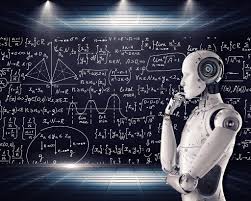
Fundamentally, AI or artificial intelligence refers to the intelligence demonstrated by the machines. And ML or machine learning is a way using which professionals achieve AI. Machine learning can be considered as the ability of machines to learn utilizing statistical techniques without being programmed explicitly.
2- Ways AI and machine learning are facilitating average people’s lives
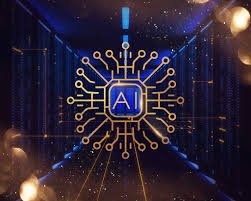
The concepts of AI and machine learning aren’t completely foreign to us as they have been heavily explored by popular media. There are lots of movies which have shown us a world where AI-enabled robots and machines hold the dominating power. And these have triggered, to a good extent, lots of negative impressions about AI and machine learning among the average people. However, despite how negatively movies demonstrate the power of AI and machine learning, these technologies are truly transforming average human lives into better ones. Let’s explore the most common aspects that are being impacted by AI and machine learning.
2.1- Banking and financial services
![]()
It’s hardly possible to count the number of people that have bank accounts. In addition, just consider the number of their associated facilities like credit cards which are in circulation. Now imagine how many hours human employees of these institutions would have to invest to sift through the transactions that are performed every day? And how much time and effort it would take to identify an anomaly? With the help of AI and machine learning, a huge number of banks and financial institutions have become able to review the quality of various applications and to analyze and predict risks, in an effort to make informed decisions. The so-called traditional industry is implementing AI and machine learning to increase user engagement. High-end technologies like predictive analysis, chatbots, voice recognition etc are helping minimize the gap between potential customers and financial institutions. These days, it’s possible for any customer to contact any of these establishments anytime and from anywhere and receive real-time replies.
2.2- Healthcare services
![]()
Both AI and machine learning have already acquired a significant part in our well-being and health. From being utilized for faster patient diagnosis to the prevention of illnesses – these technologies are being used on a regular basis by lots of healthcare service providers. These days, it’s possible to predict the potential health hazards a person may be susceptible to, depending on his/her genetic history, socio-economic status, age etc – which was simply unimaginable before the emergence of AI and machine learning. With the help of AI and machine learning-powered programs, healthcare service providers can cross-reference symptoms against databases that contain millions of cases of illnesses to expedite the process of diagnosing disease and illness, saving lives through faster and appropriate treatment. These technologies are also being adapted to expedite research works toward cures of different diseases.
2.3- Email
![]()
Almost every person uses email these days for a huge number of purposes. It may sound unlikely but your email inbox is a place where advanced technologies take place on a regular basis. There are two key aspects where email service providers use AI and machine learning. First comes the advanced spam filter. Unlike plain rule-based filters that aren’t much effective against spam as spammers can update their messages quickly to work around them, advanced spam filters continually learn from a wide range of signals like message metadata, words in the message etc to prevent spam. Another aspect is smart email categorization. You’ve probably seen that Gmail uses an approach to categorize the emails into primary, promotion, social inboxes. This is made possible with the help of AI and machine learning together with manual intervention from users. When some messages are marked in a constant direction by a user, a real-time increment to that threshold is performed by Google in order to achieve appropriate categorization.
2.4- Transportation industry
![]()
There’s a heavy influence of AI and machine learning on the present transportation industry can be found. These technologies have been instrumental in lowering threats triggered by reckless driving via the deployment of automation and sensory management. There are vehicles that can understand their surrounding parameters and thus, can take precautionary measures whenever needed to ensure passenger safety. Apart from vehicles, AI and machine learning technologies are to be deployed soon to prevent traffic congestion on roads and for traffic management.
2.5- Taking over tedious and hazardous jobs
![]()
AI and machine learning can seem to be a boon to humanity when we consider the fact that they liberate humans and enable them to focus on tasks in which they excel. These technologies take care of a wide range of tedious tasks that have to be performed in order to attain different results. Machines excel in performing cumbersome tasks, leaving enough time and room for humans to focus on more creative aspects of a business. In the financial sector, for example, AI and machine learning help financial analysts to get some relief from the monotonous nature of their jobs and concentrate on deeper analysis and research of all-round customer experience. In the context of hazardous jobs like bomb disposal, welding etc, AI and machine learning are helping the professionals to a great extent. These days, machines are taking over those jobs with the help of human intervention.
2.6- Social networking
![]()
Almost everyone has experienced it several times. When a user uploads pictures to Facebook, the faces get highlighted automatically and the service suggests friends to tag. If you wonder how it can find out which of your friends are in the picture, Facebook uses AI and machine learning techniques to recognize faces. It also uses these technologies to personalize their users’ newsfeed and ensure that they are viewing posts that interest them. Apart from Facebook, almost all other social networking platforms including Pinterest, Instagram, Snapchat etc leverage AI and machine learning to maximize user experience.
2.7- Online shopping
![]()
Online shopping has become almost an inevitable part of life for today’s tech-savvy customers. Have you ever wondered how e-commerce websites quickly return with a collection of the most relevant items related to your search? AI and machine learning are technologies that make it possible. Personalized recommendations on their home page, product pages etc are also examples of their deployment. Fraud protection is another aspect where these technologies perform a great job. Here, AI and machine learning are deployed to not only avert fraudulent transactions but to lower the number of legitimate transactions that are declined because of being falsely marked as fraudulent.
2.8- Home security and home automation
![]()
When it comes to home security, these days, a significant number of homeowners are deploying cutting-edge systems are deploying high-end cameras and security systems powered by AI and machine learning. These systems are capable of building a catalog of the frequent visitors of a home and thus, can detect uninvited guests instantly. Smart homes also offer a multitude of different types of useful features such as providing notification when the kids come back from school etc. When combined with appliances, AI and machine learning can make household management and housework seamless. From allowing the refrigerator to communicate with the oven to replenishment of food and supplies – all have become possible.
Final Thoughts

From the above examples, it can be concluded that a significant number of things, which were simply unimaginable before the emergence of AI and machine learning, have become possible these days. However, similar to other technologies, AI and machine learning also come with a significant number of negative concerns. The biggest one of them is that these technologies will replace humans in performing several tasks, making people jobless eventually. However, if these technologies are looked upon as tools rather than replacements, businesses should be able to attain a huge industrial growth. According to many experts, AI and machine learning have an opportunity to work together with humans. By nature, humans are good at raising the right questions while AI and machine learning are good at dealing with huge amounts of information. By working together they can leave a huge business impact. The future of these technologies isn’t exactly clear today, but they’ll surely have an impact on society as they are doing right now. We’ll have to wait to see whether that impact turns out to be positive or negative but it can be said that these technologies have a huge potential to make the lives of the people easier to a great extent.
. . .
To learn more about artificial intelligence, click here and read our another article.
The post AI and Machine Learning facilitate people’s lives in terms of many aspects appeared first on Magnimind Academy.
]]>The post 2 Immersive Topics: Data Science and Artificial Intelligence appeared first on Magnimind Academy.
]]>Before delving deeper, let’s have a quick look at the fundamental concepts of data science and artificial intelligence.
1- What is data science?
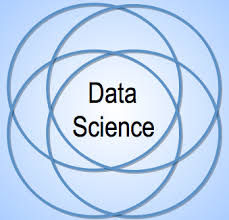
With the emergence of big data coupled with fast computing power, many decision-makers of businesses are trying to identify different ways to attain their business goals. These days, whenever they want to launch something new, they’re looking to data science professionals in order to get demand, market, target demographic, among others. You can think of data science as an umbrella term for all methods and techniques that professionals use to analyze huge amounts of data in order to derive insights from them. It’s the general practice of utilizing scientific tools and techniques to draw insights from or find patterns in data. Almost everything is covered by this field – from preparing raw data for analyzing to presenting insights gained from analytics.
2- What is artificial intelligence?
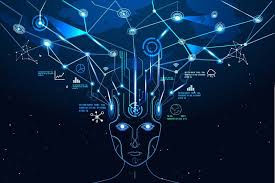
Artificial intelligence or AI is a broad term. At its core, it attempts to make machines think like human beings. Any algorithm, code or technique that enables computers to develop, demonstrate, and mimic human cognitive behaviors or abilities falls under the category of artificial intelligence. An artificial intelligence-powered system can be as complex as driverless cars or as simple as software which plays chess. Within artificial intelligence, there is machine learning which is considered the most exciting part of the field today and for reasons. With the help of machine learning, artificial intelligence has made a significant number of breakthroughs which once seemed nearly impossible. It’s the key reason that computers can steer a car or spot one of your friend’s face in a photo.
3- Data science and artificial intelligence – How they are different
![]()
Here are some of the major differences between data science and artificial intelligence. It’s important to understand that both of these are extremely popular choices in the tech landscape and the differences mentioned below are completely based on their operational nature.
- Data science is all about capturing, analyzing, and deriving insights of massive amounts of data whereas artificial intelligence involves providing the machines with data in order to train them.
- Data science involves identifying patterns in data whereas artificial intelligence involves observing intelligence in data.
- In the graphic aspect, data science involves representation in different graphical formats whereas in artificial intelligence, algorithm network nodes are used in the representation.
4- The relation between data science and artificial intelligence
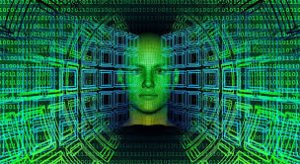
Data science is an interdisciplinary domain which requires concepts and skills used in disciplines like statistics, visualization, machine learning etc. Data science is a general term for methods and process which analyze and manipulate data. It empowers artificial intelligence to identify appropriate information and meaning massive volumes of data with higher efficiency and speed. As for the term data science and artificial intelligence, it’s quite easy to become confused. Unfortunately, both of these terms get discussed frequently and casually by some people more interested in hype instead of solving problems, making the scenario even more confusing.
If you want to step into any of these fields, here is the think you need to keep in mind – forget the term artificial intelligence for the time being because machine learning is the biggest and most practical application for this field today. So, machine learning is the technology businesses expect candidates to understand. You can consider data science as the way you wish to implement that machine learning. It’s the real-world application of artificial intelligence with the objective of developing products/services for people.
One may argue that data science professionals were working long before the appearance of artificial intelligence as a functional option and there’re applications that don’t exclusively benefit from contemporary artificial intelligence. In the context of data science, the problem with the conventional approach is that there are massive amounts of data to be analyzed and a limited number of data science professionals to do it. Non-intelligent methods are very time- and talent-intensive. They can take a huge to come up with results when answers are really time-sensitive. As a matter of fact, artificial intelligence does need data science professionals to set up and monitor, but real-time analytics can be powered by its algorithms. And this shortens the gap between the time data is produced and the time it’s interpreted into valuable insights.
If you want to learn about an example that uses both data science and artificial intelligence, you can think of IBM Watson. It’s an AI technology which helps physicians identify key information in the medical records of a patient quickly to offer relevant evidence, as well as, explore treatment options. It takes in the medical records of a patient first and then comes up with personalized and evident-based recommendations fueled by information from a collection of 15+ pages of texts, 200 textbooks, and 300+ journals that provide the doctors with instant access to a huge amount of information personalized to the treatment plan of the patient.
5- What should you do to become a successful professional?
![]()
If you consider any subset of artificial intelligence – from basic machine learning to deep learning, you can see that all these recent advancements have created a huge need for talent, creating a substantial demand and supply gap of data science professionals. Even if you consider data scientists, who belong to the highly trained segment of the data science field, most likely it’s the youngest of generations who have actually been trained in the advanced artificial intelligence approaches, narrowing the present pool of talent even further.
As the artificial intelligence is steadily becoming transformational across different end-markets – from consumer platforms to enterprise, from robotics to cybersecurity, and more – the demand for data science professionals is growing at an extremely fast pace. The role of data science professionals in the context of artificial intelligence now assumes a new level of importance.
These days, data science professionals are automating different types of lower level tasks and handling more complex and higher level tasks. In that process, they’re both automating tasks done manually be developers or users previously and enabling them to create or use increasingly powerful products.
In the short-term, artificial intelligence is creating an actual need for data science professionals with real talent. In the long-run, data science professionals will likely to evolve from their present roles with the advancements taking place in the artificial intelligence landscape.
So, if you want to start your career in any of these fields, you’ve to be prepared to show your prospective employers that you’ve the right skills together with a deep understanding of the concepts that would go along with your abilities. But you should always remember that skills, as well as, understanding don’t come from following a specific set of steps. You can only attain them, at an exceptional level, by solving real-life business challenges. You’ve to work on projects which convert raw data into features that automate learning. So, start with the basics of finding an appropriate project that would enable you to work on both data science and artificial intelligence technologies.
There’re lots of people who may think that following a set plan will help them greatly to get them their skills faster but in reality, there’s no quicker way to learn what’s needed than struggling through the problem first and then trying to find the solution. So, focus on the problems related with both data science and artificial intelligence, and try to solve them. Try to build real-world applications in order to solve them, if possible, to maximize your learning.
Final Thoughts

Both the fields of data science and artificial intelligence are heavily impacting almost every industry. If you want to step into any of these fields, probably this is the best time to start your journey in order to become a part of the transition. Businesses are shifting their resources from highly expensive tools to open-source platforms. Existing tools are being scaled or replaced by open-source platforms to manage and analyze huge amounts of data. You can see from the present trends in the tech domain that both of these fields offer massive opportunities. However, it’s important to remember that becoming a data science professional or an artificial intelligence professional isn’t easy at all and doesn’t involve working on fancy forecasts and models always. A career in any of these fields comes with a steep learning curve. But if you think you can put in your best effort to maximize your learning and stay motivated throughout the journey, keep the above steps in mind and jump in.
. . .
To learn more about data science, click here and read our another article.
The post 2 Immersive Topics: Data Science and Artificial Intelligence appeared first on Magnimind Academy.
]]>The post Image Processing And Its Future Implications appeared first on Magnimind Academy.
]]>Image processing technology
So what is image processing? Digital image processing refers to the process of recognizing, making algorithmic enhancements and manipulating a digital image. In general, the technology deals with images that are two-dimensional entities (like satellite pictures, scanned documents etc) captured electronically. In the process, multiple computer algorithms are used by developers to solve different tasks. Here is some image processing examples: image detection, analysis, restoration, image data compression, enhancement, analog image processing, and estimation, among others.
Future scope
Image processing technology extracts information from images and integrates it for a wide range of applications. Here, we’ve outlined the most prominent fields where image processing could bring significant benefits.
In production automation
Image processing applications can make it possible for machines to act as more self-sufficient and ensure the quality of products. Assuming processing systems work faster than humans, inline quality controls like 100% controls can be very quickly implemented. Damaged parts can be replaced or corrected, which would lead to more efficacies of production facilities. With the help of advanced image processing technologies, even an entire production facility can be managed.
In agricultural landscape
Key concerns in agriculture include quality of yield and water stress. Irrigation monitoring and providing information can be made possible by tracking satellite imaging of the fields. Processing of infrared images can act as an additional means to monitor and analyze irrigation. This analysis can then be utilized in pre-harvesting operations for deciding whether to harvest or not. Growth of weeds can also be detected by using a combination of machine learning and image processing algorithms and techniques. Quality of yields can be ensured by the reliable and accurate method of image processing through sorting and grading of fresh products.
Biomedical and other healthcare applications
3D imaging is a process where a 2D image is converted into a 3D image by creating the optical illusion of depth. The next step is rendering where colors and textures are included in the 3D model to make it look realistic. With such 3D imaging and rendering, doctors can see extremely high quality 3D images of organs that they couldn’t have seen otherwise. This, in turn, can help them carry out delicate surgeries and make accurate diagnoses.
Disaster management
Drone aircrafts monitoring environmental and traffic conditions can use image processing to capture high resolution real-time videos and photographs. In case of natural or other disasters like flood, earthquake, fire etc, knowing which disaster-struck areas the authorities need to focus upon can help save lives by reaching quickly to those trapped and bring them out safely. Even monitoring the progress and ensuring co-ordination during such rescue operations can be made easier with real-time image processing techniques.
The post Image Processing And Its Future Implications appeared first on Magnimind Academy.
]]>